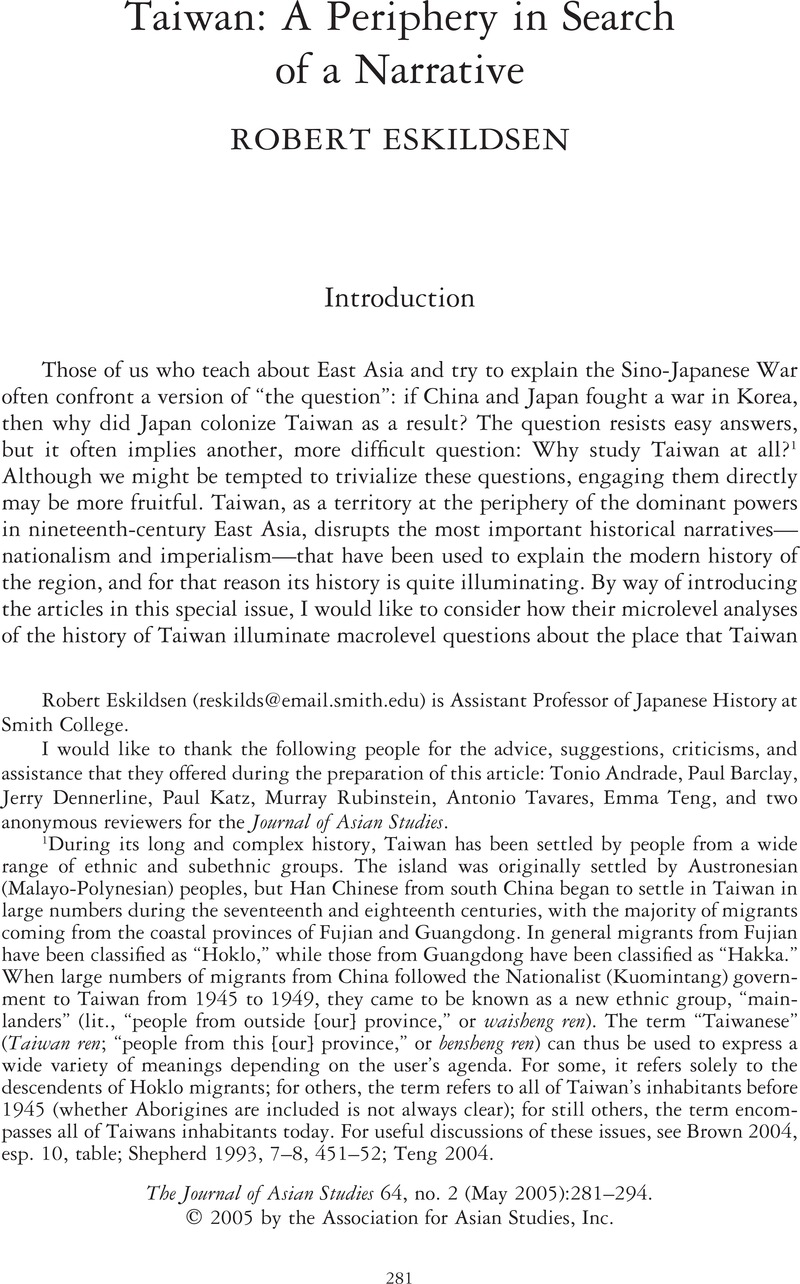Crossref Citations
This article has been cited by the following publications. This list is generated based on data provided by Crossref.
Bernstein, Anya
2007.
Why 'Taiwan is Too Democratic': Legitimation, Administration, and Political Participation in Taipei.
SSRN Electronic Journal,
Fraleigh, Matthew
2010.
Japan's First War Reporter: Kishida Ginkō and the Taiwan Expedition.
Japanese Studies,
Vol. 30,
Issue. 1,
p.
43.
Schwartz, Barry
and
Kim, Mikyoung
2010.
Northeast Asia's Difficult Past.
p.
1.
Salmenkari, Taru
2020.
Building Taiwanese history and memory from below: The role of social movements.
Memory Studies,
Vol. 13,
Issue. 1,
p.
24.
JENCO, LEIGH K.
and
CHAPPELL, JONATHAN
2021.
INTRODUCTION: HISTORY FROM BETWEEN AND THE GLOBAL CIRCULATIONS OF THE PAST IN ASIA AND EUROPE, 1600–1950.
The Historical Journal,
Vol. 64,
Issue. 1,
p.
1.
Lemus-Delgado, Daniel
2022.
Reflexiones sobre la política exterior de Taiwán: entre espacios reales e imaginados .
Oasis,
p.
71.
McMahon, Daniel Mark
2023.
From bandit nests to Sakura orchards: colonial rule, press images, and the stating of Taiwan's Northern Mountains, 1896–1908.
International Journal of Asian Studies,
Vol. 20,
Issue. 1,
p.
157.



 [The Colonial Dimension of the 1874 Taiwan Expedition]. In Meiji ishin to Ajia
[The Colonial Dimension of the 1874 Taiwan Expedition]. In Meiji ishin to Ajia 